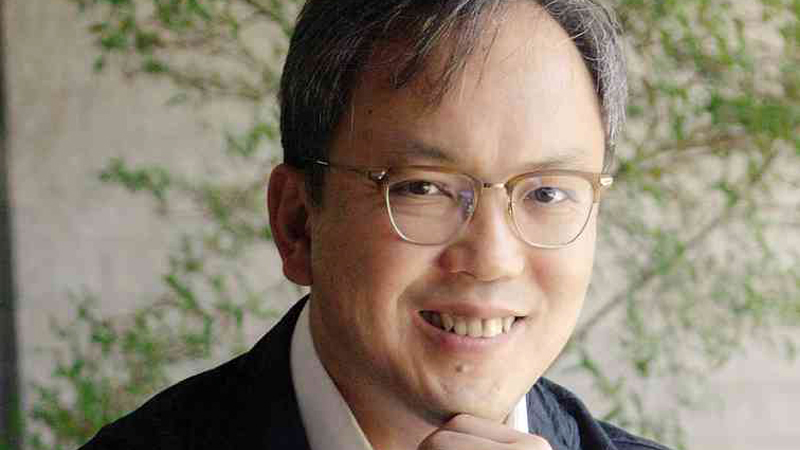
Except for the time Boy Abunda was diagnosed with liver abscess that required him to undergo surgery and to take weeks off from his hosting duties on “The Buzz” and “Aquino and Abunda Tonight,” little attention has been given to this hardworking yet often neglected organ.
A select group of high-net-worth individuals recently had a chance to think about the state of their liver in an eye-opening talk given by Dr. Lee Kang Hoe, respiratory physician and intensivist at the Asian American Liver Center Pte. Ltd., in Gleneagles Hospital, Singapore.
Dr. Lee, who visits Manila from time to time to speak on his area of expertise, discussed the liver on his recent trip—from its purpose and functions to its various diseases and preventive measures to keep it in tip-top shape.
Busy organ
Located on the right side of the body below the lungs, the dome-shaped liver weighs about 4 lbs and is one of the human body’s busiest organs. Among its many jobs are to produce bile for digesting fats, cleanse the blood of toxic substances like alcohol and drugs, and turn stored sugar into usable sugar when the body’s glucose level dips below normal.
Of liver diseases, the two that people are most familiar with are cirrhosis (or the scarring and hardening of the liver from years of alcohol abuse) and Hepatitis B (a virus spread through blood transfusion, needles, tattoos and sex).
Remarkably, coffee may help lower the risk of alcoholic cirrhosis. A study conducted by the American Medical Association revealed that a cup of coffee lowers one’s risk by 20 percent, four cups by as much as 80 percent!
Meanwhile, an affordable vaccine, which can be administered as early as childbirth and protects you for life, has seen the substantial decrease of Hepatitis B cases and even liver cancer in countries where the vaccine is made available through national healthcare programs.
If there’s one disease we should all be concerned about, says Dr. Lee, it’s Nonalcoholic Steatohepatitis—NASH for short, also known as fatty liver. “It’s the main epidemic now,” he says. “For the past 20 years it’s been a problem of the well-to-do, but given the proliferation of fast-food chains all over the world, it’s now cascaded to all socioeconomic levels. It’s very easy to have an unhealthy diet these days.”
Fatty liver is just that—it is literally fat in the liver. Think of it as foie gras, says the doctor, the liver of a force-fed duck or goose. “Fatty liver isn’t just from high-fat food, it’s from overeating,” he concludes. While it won’t kill you straight away, this disease found among diabetics and the obese puts you at risk for heart attacks and strokes in the long run.
Preventing and even correcting fatty liver is surprisingly simple. Weight loss, says Dr. Lee, is a marker of a well-functioning liver. “At the end of the day, your waist-to-hip ratio gives you a good idea about the state of your liver,” says the doctor. “And no, liposuction won’t do anything for your liver.”
Weight loss can be achieved through regular exercise and a balanced, healthy diet. Steer clear of fatty, processed food and go for high-fiber fruits and vegetables; even meat and alcohol, when consumed in moderation, are okay. Taking the herbal supplement silymarin (milk thistle) may benefit the liver, he says, but don’t expect dramatic results.
As for the trendy juices and detoxes designed to cleanse the liver, Dr. Lee thinks they’re useless. “Primarily, they’re there to make you eat less. But how much impact one week of fruits and vegetables will have on your liver is highly debatable,” he says with a chuckle. “It’s taken you years to get your liver to where it is today; one week of cleansing is not going to make much of a difference.”
Resilient
Amazingly, despite the beating it takes from poor lifestyle choices, the liver is pretty resilient. Dr. Lee—who chose his specialization “by chance,” when he was mentored by pioneering liver transplant specialists/professors Sir Roy Calne and Thomas Starzl, then worked in the world’s leading liver transplant facility, University of Pittsburgh Medical Center—notes the organ’s ability to regenerate and actually bounce back from seeming hopelessness.
“It depends on the cause of liver disease and whether this is treatable,” he says. “For instance, if the liver disease is due to excessive alcohol intake, cessation of alcohol may lead to a substantial recovery of liver function. Similarly, if Hepatitis C is causing liver disease, elimination of the virus by medications may lead to substantial liver recovery. However, not all advanced liver disease can be reversed, hence the need for liver transplantation in these patients.”
Singaporean actress and model Andrea de Cruz is a perfect case in point. Twelve years ago, in an attempt to maintain her lean figure, she began taking Slim 10, weight-loss pills that eventually led to liver failure. Luckily, her boyfriend at the time, actor Pierre Png, proved a good match and gave her part of his liver. De Cruz responded well to the transplant and is living a healthy life today. She also married her donor.
Indeed, such stories, including those of acute liver failure and pre- and post-transplant patients and those undergoing dialysis at the fully integrated Parkway Asian Transplant Unit at Gleneagles Hospital, have been nothing short of inspiring to this doctor.
“Seeing patients who are very ill from their liver disease recover to normal ‘health’ after a successful liver transplant,” says Dr. Lee when asked about the most fulfilling part of his job. “This is truly a miracle of modern medicine!”














































